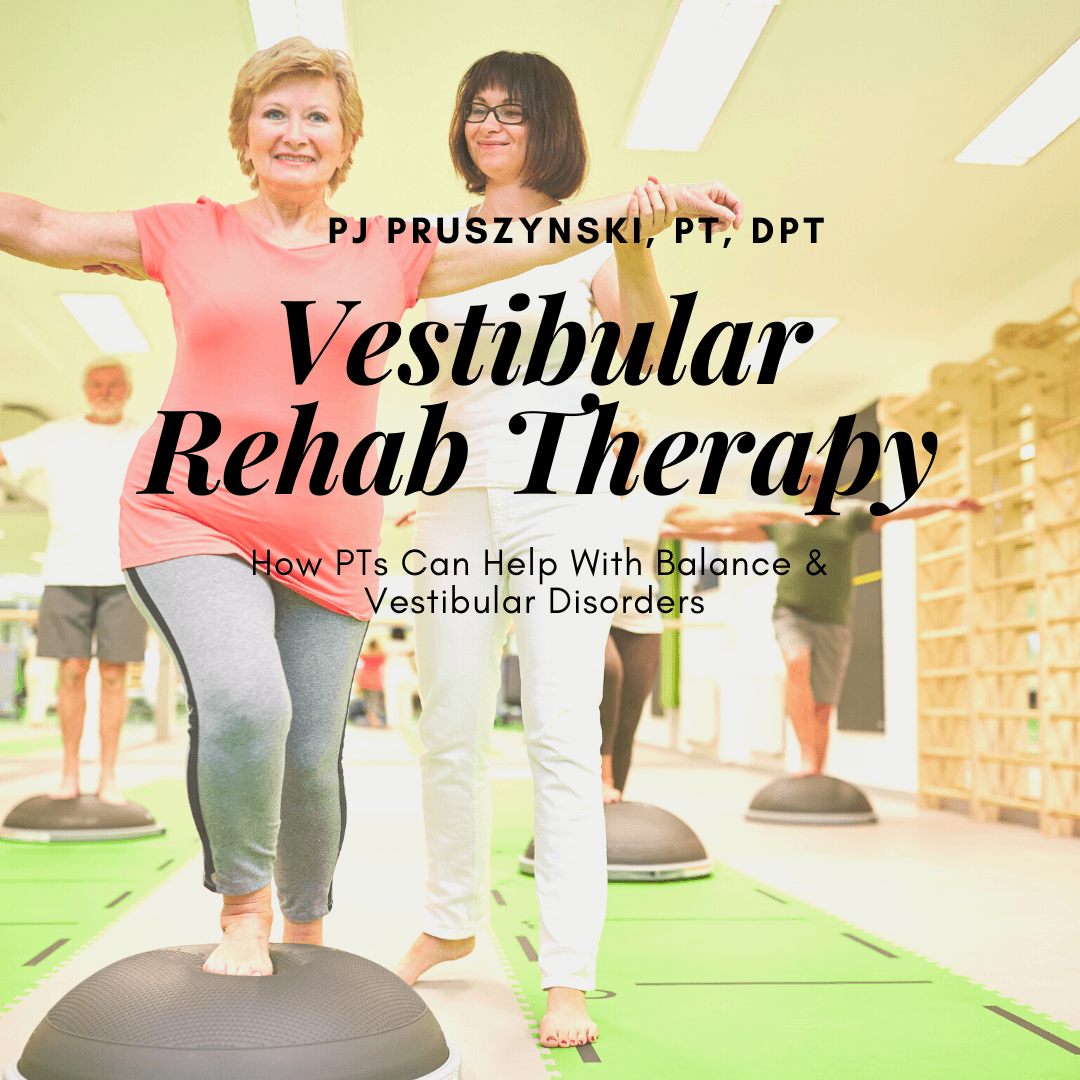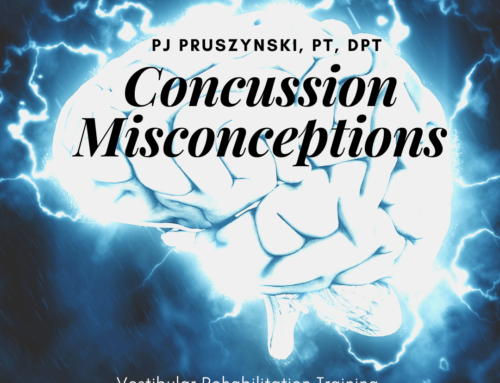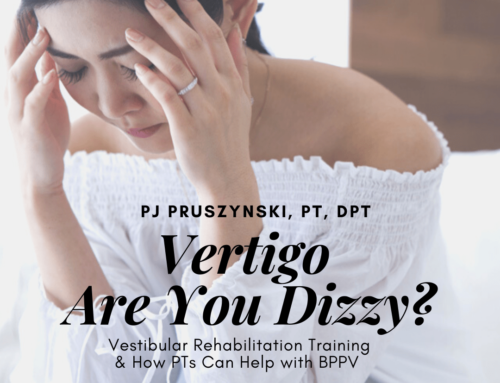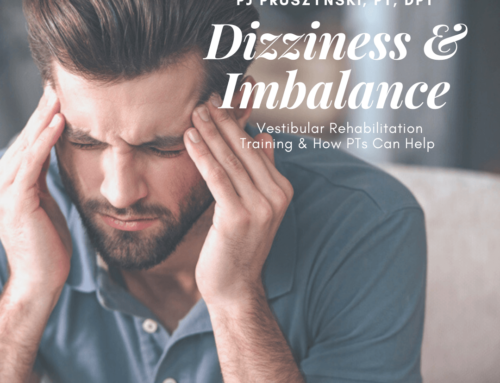Vestibular Rehabilitation Therapy (VRT)

We have discussed in a few previous blogs that dizziness or imbalance caused by a multitude of conditions can be treated through Vestibular Rehabilitation Therapy, VRT.
What is Vestibular Rehabilitation Therapy (VRT) and Does it Really Work?
The short answer is that VRT has been shown to improve dizziness and imbalance by improving natural reflexes, utilizing alternative strategies to maintain balance, and getting the body used to irritating motions and environments.
VRT looks different for each person because the reason they are dizzy is different. Dizziness is a sensation that is created when there is a mismatch of information. Balance is influenced through 3 components: 1) our vision, 2) our joint position sense, 3) and our vestibular system. Our vestibular system is composed of bony and membranous canals in both inner ears. It provides information on acceleration of our head relative to the world, meaning how fast we are moving. All three of these components are analyzed by our brain to make sense of the information they are providing.
If one or more of the three components of the balance system OR the processing center (the brain) are rendered inefficient or inaccurate through disease processes or trauma, then you may experience feelings of dizziness or imbalance.
Physical Therapists are Here to Help!
A trained professional in Vestibular Rehabilitation Therapy (VRT) will be able to identify what is causing your dizziness or imbalance and provide treatments and strategies to improve your symptoms.
BPPV
Benign Paroxysmal Positional Vertigo (BPPV) is a condition where calcium carbonate crystals called otoconia migrate to the vestibular canals and cause transient room-spinning dizziness typically with laying down or sitting up from laying down. A VRT Therapist is able to identify the canal that the otoconia is stuck in and perform specific maneuvers to assist the movement of the otoconia back where it belongs. If you want to learn more about BPPV, check out a previous blog, “Vertigo, Are You Dizzy”.
Retraining The VOR
There is a reflex between your eyes and your vestibular system called the Vestibular Ocular Reflex (VOR) that is responsible for stabilizing an image while the head is moving. This reflex can be tested by determining if an individual can keep letters in focus while their head is moving, aka dynamic visual acuity. Your VOR can be impacted by disease, trauma, or medication. Research has shown that an individual will exhibit greater improvements in dynamic visual acuity if they are treated with VRT and balance therapy versus balance therapy alone. Sway with walking will decrease following VRT, so you may feel more stable when you walk.
Saccades
Another way dizziness and imbalance can be improved is by utilizing other skills or systems to substitute for a dysfunctional part of the balance system. We can compensate for a poor VOR through utilizing quick eye movements called Saccades. Saccades are quick eye movements we make when transitioning from one target to another. They are also utilized when we overshoot or undershoot when looking at something. Research has shown that VRT can improve the efficiency of recruitment of corrective saccades when an individual is trying to keep up with head movements. We can help teach your brain and your body to work better together.
Habituation
A VRT Therapist uses specific tests to identify the movements that provoke your symptoms. We then create a treatment plan to assist in habituating to those symptom-provoking stimuli. Following an insult to the balance system, it is normal to become sensitive to certain stimuli, for example scanning through a busy store aisle or when you bend forward to tie your shoes and then sit up tall. VRT assists in training the brain so that these stimuli are not a threat so that you don’t feel dizzy. Research has shown that targeted habituation through VRT was more effective than general conditioning programs and pharmaceutical intervention (vestibular suppressants). So, we know it works!
If you are suffering from dizziness or imbalance you should seek care from a Physical Therapist trained in Vestibular Rehabilitation Therapy. We are able to determine which components of your balance system are affected and can aid in your recovery. If you are not a candidate for VRT, we can also help with a referral to a specialist.
You Don’t Have To Suffer
Let us help you stop spinning and improve your quality of life! At One on One PT, you will benefit from individualized attention and a personalized care plan to help overcome your dizziness.
Sources:
- Recovery of dynamic visual acuity in bilateral vestibular hypofunction.
- Effect of vestibular rehabilitation on passive dynamic visual acuity.
- Early adaptation and compensation of clinical vestibular responses after unilateral vestibular deafferentation surgery.
- New insights into vestibular-saccade interaction based on covert corrective saccades in patients with unilateral vestibular deficits.
- Effects of Vestibular Rehabilitation on Dizziness and Imbalance.



